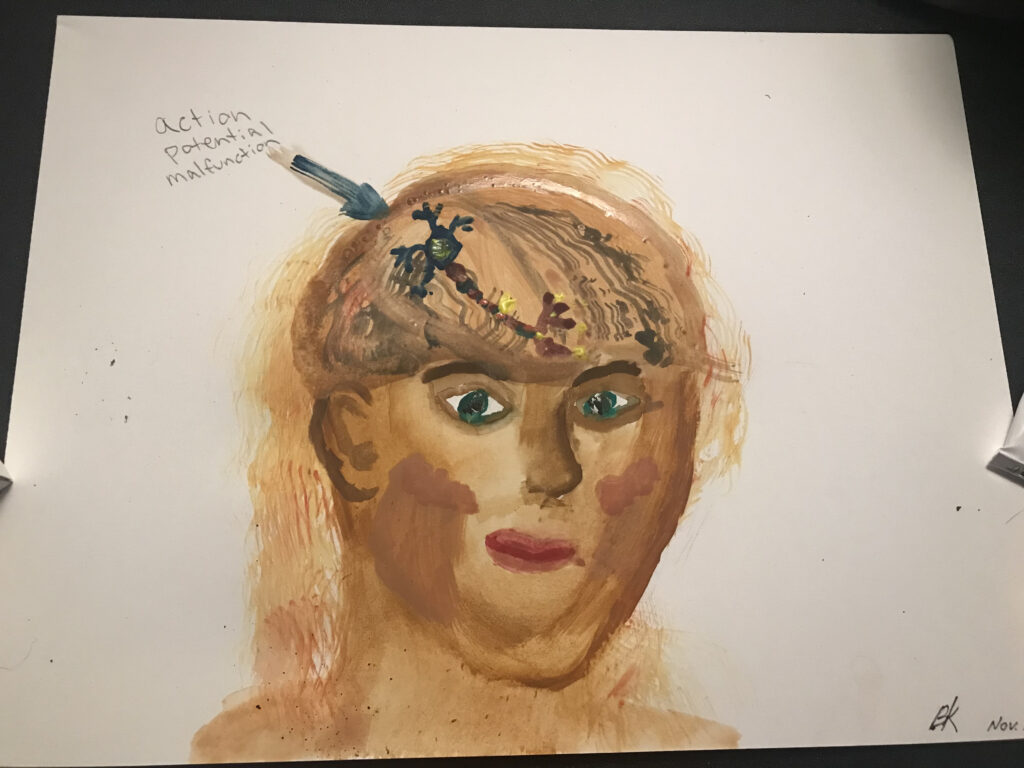This STEAM project has a focus on part of the reason why people who are born with trisomy 23, or Down Syndrome, experience slower connections within the nervous system that affect their ability to interact with the world. The posted watercolor painting (admittedly, not a great one since my artistic skills are mediocre) is supposed to be a representation of what happens when the central nervous system’s glial cells known as oligodendrocytes are damaged or are found in smaller numbers than the non-affected population of people. The nervous system’s cells called neurons communicate amongst one another through the process of firing action potentials upon receiving a set of neurotransmitters that must travel down a well-protected tunnel called the axon from the end of the neuron where the dendrites (the neurotransmitter receiving branches of the neuron) are located to the opposite end of the neuron where the neurotransmitters are launched from the terminal branches. This system communication determines the effectiveness of how the mind processes what to do next and how to do it based on whether the action potential is fired or not in an all or nothing scenario – the action potential cannot occur frequently since a certain amount of millivolts can be generated at one time and once the polarization of the neuron’s membrane has reached about -70 millivolts, the action potential can be fired down the axon similarly to how a firearm functions. The axon is protected by the myelin sheath, which is composed of lipids and proteins and is produced by the oligodendrocytes. When the myelin sheath is damaged, the action potential does not travel as fast or as smoothly down the axon without neural disruptions and the lack of oligodendrocytes that make up white matter in the brain means that less myelin is produced and therefore the brain is at a higher risk for developmental mental malfunctions including a slowness in speech and the occurrence of a poor short term memory such as what has been found in people with Down Syndrome. Further concerns with the lack of oligodendrocytes point to a connection between people who have Down syndrome and their higher risk for early-onset Alzheimer’s disease than the non-affected population before they reach sixty years old.


I understood this project after reading a brief summary. She did an amazing job at fully describing the function of a neuron along with its anatomy. I learned something new with this project. I learned that down syndrome is a result of disruption in the nervous system. Specifically, the myelin sheath is not fully functional because of the lack of oligodendrocytes. Since the myelin sheath is not fully functional there is a disruption in the action potential. This is why people with down syndrome process things slower. This gives me a new perspective of down syndrome, individuals affected by this have to try harder just to do everyday activities and even if they tried as much as they could they still cannot fix the disruption of the action potential.
I really enjoy the painting I can tell that the yellow paint signifies the disruption of the action potential, and I can clearly cell the neuron along with all of its structures. The painting shows physical features of someone with down syndrome as well. She even demonstrated some gray matter within the brain. Great presentation!